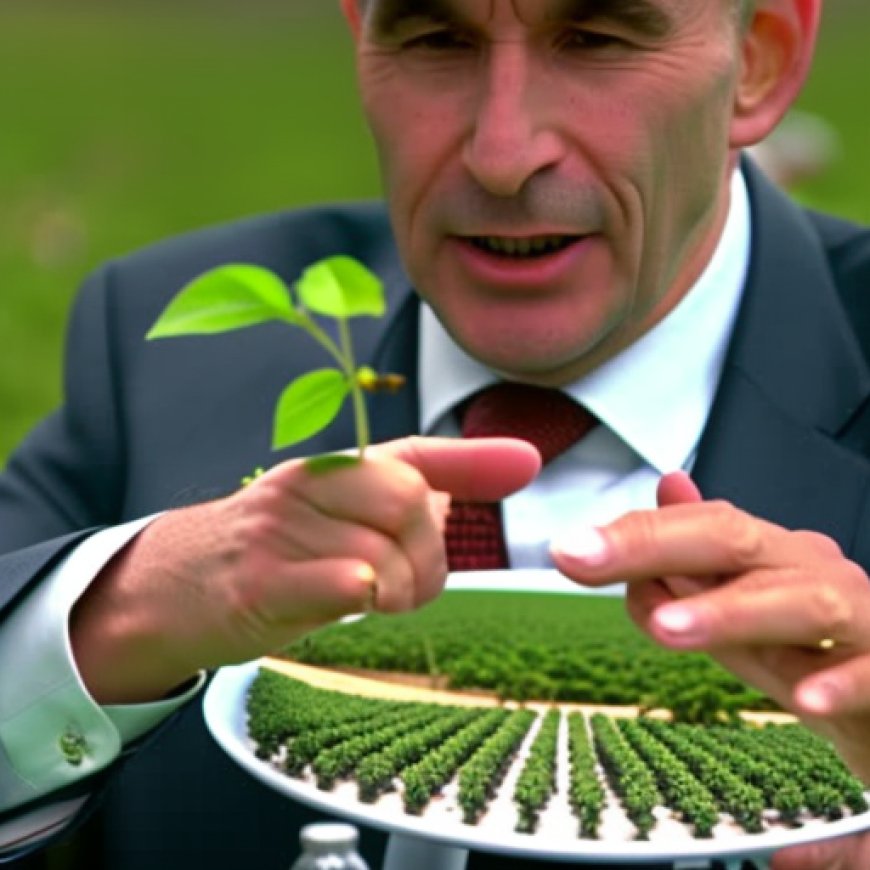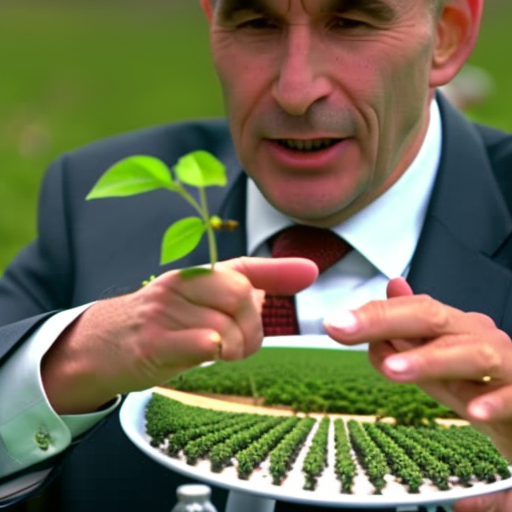Agriculture Minister discusses projects, future cooperation with Int’l Fund for Agricultural Development
Agriculture Minister discusses projects, future cooperation with Int'l Fund for Agricultural Development Agenda.ge


Otar Shamugia Discusses Projects and Cooperation with IFAD Regional Director

Introduction
Otar Shamugia, the Minister of Environmental Protection and Agriculture of Georgia, recently met with Liam Chicca, the Regional Director of the International Fund for Agricultural Development (IFAD), to discuss ongoing projects and prospects for future cooperation. The meeting took place in Tbilisi.
Successful Cooperation and Positive Results
During the meeting, Minister Shamugia expressed his appreciation for the “many years of successful cooperation” with IFAD and highlighted the positive results achieved through their joint work. He emphasized that Georgia is actively implementing reforms in various sectors, with visible positive outcomes. However, challenges still exist in certain areas, such as pasture management. Minister Shamugia acknowledged that overcoming these challenges would require the support of partners like IFAD.
Importance of Active Partnership and Effective Cooperation
Minister Shamugia emphasized the need for a “more active” partnership and “effective” cooperation with IFAD, stating that it would lead to even better results. He expressed his belief that the support of IFAD would be crucial in addressing the challenges faced by Georgia in pasture management and other sectors.
Continued Close Cooperation and Support
In response, Liam Chicca assured Minister Shamugia that IFAD would continue its “active” and “close” cooperation with the Ministry of Environmental Protection and Agriculture. He pledged ongoing support to the country in its development efforts.
SDGs, Targets, and Indicators in the Article
1. Which SDGs are addressed or connected to the issues highlighted in the article?
- SDG 2: Zero Hunger
- SDG 15: Life on Land
- SDG 17: Partnerships for the Goals
The article mentions ongoing projects and prospects for future cooperation in the field of agriculture and environmental protection. These issues are directly related to SDG 2, which aims to end hunger, achieve food security, improve nutrition, and promote sustainable agriculture. Additionally, the mention of pasture management challenges connects to SDG 15, which focuses on protecting, restoring, and promoting sustainable use of terrestrial ecosystems. The emphasis on partnership and cooperation with the International Fund for Agricultural Development (IFAD) also aligns with SDG 17, which emphasizes the importance of global partnerships to achieve the goals.
2. What specific targets under those SDGs can be identified based on the article’s content?
- SDG 2.4: By 2030, ensure sustainable food production systems and implement resilient agricultural practices that increase productivity and production, that help maintain ecosystems, that strengthen capacity for adaptation to climate change, extreme weather, drought, flooding, and other disasters, and that progressively improve land and soil quality.
- SDG 15.1: By 2020, ensure the conservation, restoration, and sustainable use of terrestrial and inland freshwater ecosystems and their services, in particular forests, wetlands, mountains, and drylands, in line with obligations under international agreements.
- SDG 17.6: Enhance North-South, South-South, and triangular regional and international cooperation on and access to science, technology, and innovation and enhance knowledge sharing on mutually agreed terms, including through improved coordination among existing mechanisms, particularly at the United Nations level, and through a global technology facilitation mechanism.
Based on the article’s content, the targets mentioned above are relevant to the issues discussed. The focus on sustainable agriculture practices, ecosystem conservation, and international cooperation aligns with these specific targets under SDG 2, SDG 15, and SDG 17.
3. Are there any indicators mentioned or implied in the article that can be used to measure progress towards the identified targets?
- Indicator for SDG 2.4: Proportion of agricultural area under productive and sustainable agriculture
- Indicator for SDG 15.1: Coverage by protected areas of important sites for mountain ecosystems
- Indicator for SDG 17.6: Number of countries that have national statistical legislation that complies with the Fundamental Principles of Official Statistics
The article does not explicitly mention these indicators, but they can be used to measure progress towards the identified targets. The proportion of agricultural area under sustainable agriculture can indicate the implementation of resilient agricultural practices mentioned in SDG 2.4. The coverage by protected areas of important sites for mountain ecosystems can measure progress towards the conservation and restoration of terrestrial ecosystems mentioned in SDG 15.1. The number of countries with statistical legislation complying with the Fundamental Principles of Official Statistics can reflect enhanced knowledge sharing and coordination among existing mechanisms, as stated in SDG 17.6.
Table: SDGs, Targets, and Indicators
| SDGs | Targets | Indicators |
|---|---|---|
| SDG 2: Zero Hunger | 2.4: By 2030, ensure sustainable food production systems and implement resilient agricultural practices that increase productivity and production, that help maintain ecosystems, that strengthen capacity for adaptation to climate change, extreme weather, drought, flooding, and other disasters, and that progressively improve land and soil quality. | Proportion of agricultural area under productive and sustainable agriculture |
| SDG 15: Life on Land | 15.1: By 2020, ensure the conservation, restoration, and sustainable use of terrestrial and inland freshwater ecosystems and their services, in particular forests, wetlands, mountains, and drylands, in line with obligations under international agreements. | Coverage by protected areas of important sites for mountain ecosystems |
| SDG 17: Partnerships for the Goals | 17.6: Enhance North-South, South-South, and triangular regional and international cooperation on and access to science, technology, and innovation and enhance knowledge sharing on mutually agreed terms, including through improved coordination among existing mechanisms, particularly at the United Nations level, and through a global technology facilitation mechanism. | Number of countries that have national statistical legislation that complies with the Fundamental Principles of Official Statistics |
Behold! This splendid article springs forth from the wellspring of knowledge, shaped by a wondrous proprietary AI technology that delved into a vast ocean of data, illuminating the path towards the Sustainable Development Goals. Remember that all rights are reserved by SDG Investors LLC, empowering us to champion progress together.
Source: agenda.ge

Join us, as fellow seekers of change, on a transformative journey at https://sdgtalks.ai/welcome, where you can become a member and actively contribute to shaping a brighter future.







